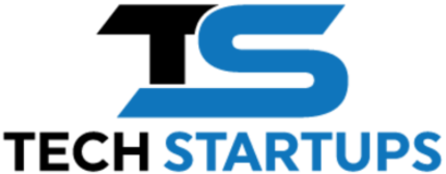NVIDIA CEO endorses Cursor: ‘100% of our engineers now code with AI’

In a CNBC interview, Jensen Huang called Cursor his favorite enterprise AI service — a watershed moment for the fast-rising MIT-founded startup that’s redefining software development.
When NVIDIA CEO Jensen Huang speaks, the tech world listens. In an October 8 interview with CNBC, Huang didn’t mince words about the tool driving a seismic shift inside the world’s most valuable chipmaker.
“My favorite enterprise AI service is Cursor,” Huang said. “Cursor is an AI coder. And every one of our engineers — 100% — is now assisted by AI coders. Our productivity has gone up incredibly.”
For a company like NVIDIA, whose engineers build everything from GPU software stacks to the frameworks powering the AI boom, this isn’t a throwaway comment — it’s a strategic signal. NVIDIA is one of the most demanding engineering environments on the planet. If every one of its developers now codes with AI assistance, it marks a definitive turning point for AI-assisted software development in the enterprise.
This moment isn’t just about a single endorsement. It’s the culmination of a rapid, aggressive rise by Cursor — an AI-native coding environment built by a small team of MIT alumni that’s now sitting at the center of one of the most important shifts in modern engineering.
NVIDIA’s Endorsement of Cursor Marks a Tipping Point for AI-Assisted Coding
The Rise of Cursor

Long before Jensen Huang’s endorsement, Cursor was quietly reshaping how engineers write software. The company behind it, Anysphere, was founded in 2022 by a group of MIT alumni who set out to build a new kind of coding environment—one where AI doesn’t just autocomplete code, but actively participates in the development process.
The Cursor quickly attracted a devoted following among developers at Shopify, OpenAI, and Instacart, winning praise for its ability to understand codebases, rewrite entire sections intelligently, and debug in real-time. Engineers could describe a task in plain English, and Cursor would translate it into functional code, flag errors before they spread, or rewrite entire functions without breaking underlying logic. For many, it felt less like a tool and more like a collaborator sitting in the editor.
This traction didn’t go unnoticed by investors. Back in March, TechStartups reported that Anysphere was in talks to raise hundreds of millions of dollars at a valuation near $10 billion, just months after closing a Series B at $2.6 billion. The speed of the jump reflected how investor attention was shifting away from generic chatbots toward AI systems built for real, high-value workflows like software development.
By that point, Cursor had already surpassed $100 million in annual recurring revenue (ARR)—a milestone few startups reach so quickly. Early funding came from OpenAI’s Startup Fund ($8M seed), followed by a $60M Series A led by Andreessen Horowitz, and a $105M Series B led by Thrive Capital and a16z. Its technology also outperformed competing tools on GAIA benchmarks, further cementing its reputation as one of the most advanced AI coding assistants on the market.
Cursor vs. Other AI Coding Tools
Cursor’s rise didn’t happen in a vacuum. The AI coding landscape has grown crowded, with a mix of autocomplete tools, agentic builders, and AI-native IDEs competing for developer mindshare. Here’s how Cursor stacks up against some of the top players:
| Tool | Core Focus | Key Differentiator | Strengths | Weaknesses |
|---|---|---|---|---|
| Cursor | AI-native IDE | Deep repo context, full-code rewriting, live debugging | Enterprise-grade adoption, agent-like capabilities | Still maturing enterprise policy controls |
| Windsurf (Codeium) | Agent-native IDE for teams | Team policy enforcement, structured workflows | Strong for orgs with security/guardrails needs | Less flexible for solo dev workflows |
| Replit | Cloud IDE + AI pair programming | Massive community, hosted execution | Collaborative prototyping, quick iteration | Not optimized for complex enterprise repos |
| Bolt | Browser-native coding agents | Fast “prompt to app” builder experience | Ideal for rapid green-field builds | Less robust for large, existing codebases |
Where tools like GitHub Copilot focus on inline autocompletion, Cursor takes a different approach. It embeds AI at the structural level, enabling developers to refactor, debug, or generate new functionality with repo-wide awareness. Windsurf pushes into team-based agent workflows, Bolt aims for lightning-fast app creation, and Replit thrives in community-driven prototyping. Cursor, meanwhile, has found its sweet spot in professional, enterprise-grade software development, which is exactly the environment NVIDIA operates in.
The NVIDIA Moment
Jensen Huang’s public endorsement of Cursor wasn’t a casual plug — it was a declaration. When the CEO of NVIDIA says “100% of our engineers are now assisted by AI coders,” it signals that AI-driven development has crossed from experiment to operational standard inside one of the world’s most technically sophisticated companies.
NVIDIA’s engineering teams are responsible for everything from CUDA and driver stacks to deep learning frameworks that underpin the entire AI industry. These are not environments where immature tools survive for long. For Cursor to be adopted across all engineering teams suggests it has met rigorous standards for performance, reliability, and integration at enterprise scale.
It also provides the kind of real-world validation that no amount of marketing can buy. Cursor has gone from being a fast-growing YC alum to becoming mission-critical infrastructure inside a $2.6 trillion company that builds the chips powering the AI boom. For the broader market, this moment is more than symbolic — it’s a tipping point. Enterprise teams that were cautiously experimenting with AI tools now have a clear precedent: NVIDIA is all in.
Cursor’s Funding Timeline
From seed to near-decacorn in less than three years
| Round | Date | Amount Raised | Lead Investors | Valuation |
|---|---|---|---|---|
| Seed | 2022 | $8M | OpenAI Startup Fund | — |
| Series A | 2023 | $60M | Andreessen Horowitz | — |
| Series B | Late 2023 | $105M | Thrive Capital, a16z | $2.6B |
| Series C / Talks | March 2025 | Hundreds of millions (in talks) | Thrive Capital (lead) | ~$10B (target) |
| Series C (Closed) | June 2025 | $900M | Thrive, Accel, a16z, DST | $9.9B |
In just a few funding cycles, Anysphere has gone from seed to nearly decacorn status, outpacing even some of the most hyped AI startups of the past decade. Thrive Capital has played a key role, doubling down at both the B and C stages. With backing from a16z, Accel, DST, and OpenAI’s fund, Cursor is now positioned as one of the most well-capitalized developer tool startups in history.
The Bigger Picture: AI Coding Crosses the Chasm
For years, AI-assisted coding tools were treated as clever sidekicks — useful for speeding up boilerplate, generating snippets, or brainstorming solutions. That phase is over. What NVIDIA’s move represents is the normalization of AI coders as core team members in enterprise environments.
When a company with thousands of engineers integrates AI into every developer’s workflow, the downstream implications are profound. Productivity metrics shift, release cycles tighten, and the definition of what a single engineer can deliver changes. Early adopters like Shopify and Instacart showed Cursor’s potential; NVIDIA’s 100% adoption demonstrates enterprise-scale viability.
The broader competitive landscape is also heating up. Replit is doubling down on agentic workflows, Bolt is pushing “prompt-to-product” velocity, and Windsurf is carving out the structured team segment. GitHub Copilot remains ubiquitous but faces mounting pressure to evolve beyond autocompletion. Cursor’s ascent forces every player to level up their ambition, particularly around deep repo integration, enterprise-grade security, and agent-like collaboration.
This is no longer a question of if enterprises will adopt AI coding assistants — it’s now a question of which platform will dominate the professional stack. Cursor’s current momentum, capped by NVIDIA’s public validation, gives it a commanding lead.
Anysphere: From YC Darling to Enterprise Backbone
Cursor’s journey from an MIT side project to NVIDIA’s favorite enterprise AI tool is a story of speed, focus, and timing. In less than three years, Anysphere built a product that not only captured developer enthusiasm but also met the standards of one of the most demanding engineering organizations in the world.
Jensen Huang’s CNBC comments mark more than a personal endorsement — they mark a watershed moment for AI in software development. What was once a promising tool for individual productivity is now embedded at the core of enterprise engineering.
As AI-native IDEs mature and competition intensifies, Cursor’s next challenge will be to maintain its lead while scaling to an even broader set of industries. But for now, the message is clear: AI-assisted coding isn’t coming — it’s here, and it’s already rewriting the rules of software development.
Editor’s note: Cursor did not pay for or sponsor this article. TechStartups.com does not have any financial relationship with Cursor or its parent company, Anysphere.
Watch the interview below: NVIDIA CEO Jensen Huang explains why Cursor is his favorite enterprise AI service and how 100% of the company’s engineers now code with




